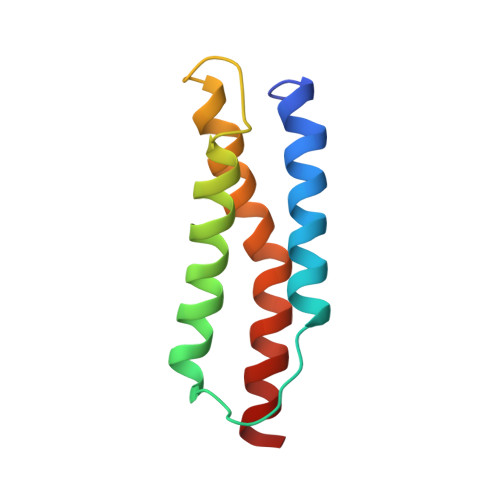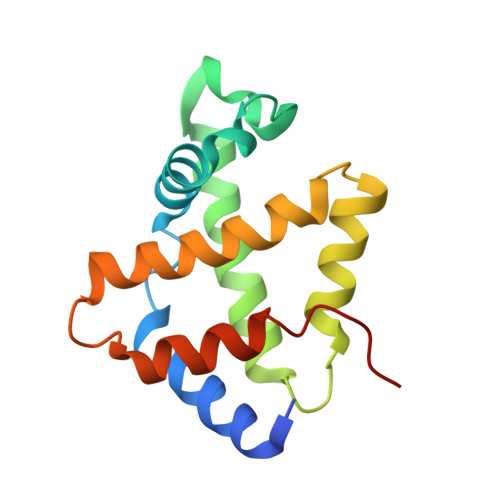A cis-proline in alpha-hemoglobin stabilizing protein directs the structural reorganization of alpha-hemoglobin.
Gell, D.A., Feng, L., Zhou, S., Jeffrey, P.D., Bendak, K., Gow, A., Weiss, M.J., Shi, Y., Mackay, J.P.(2009) J Biological Chem 284: 29462-29469
- PubMed: 19706593
- DOI: https://doi.org/10.1074/jbc.M109.027045
- Primary Citation of Related Structures:
3IA3 - PubMed Abstract:
alpha-Hemoglobin (alphaHb) stabilizing protein (AHSP) is expressed in erythropoietic tissues as an accessory factor in hemoglobin synthesis. AHSP forms a specific complex with alphaHb and suppresses the heme-catalyzed evolution of reactive oxygen species by converting alphaHb to a conformation in which the heme is coordinated at both axial positions by histidine side chains (bis-histidyl coordination). Currently, the detailed mechanism by which AHSP induces structural changes in alphaHb has not been determined. Here, we present x-ray crystallography, NMR spectroscopy, and mutagenesis data that identify, for the first time, the importance of an evolutionarily conserved proline, Pro(30), in loop 1 of AHSP. Mutation of Pro(30) to a variety of residue types results in reduced ability to convert alphaHb. In complex with alphaHb, AHSP Pro(30) adopts a cis-peptidyl conformation and makes contact with the N terminus of helix G in alphaHb. Mutations that stabilize the cis-peptidyl conformation of free AHSP, also enhance the alphaHb conversion activity. These findings suggest that AHSP loop 1 can transmit structural changes to the heme pocket of alphaHb, and, more generally, highlight the importance of cis-peptidyl prolyl residues in defining the conformation of regulatory protein loops.
- School of Molecular and Microbial Biosciences, University of Sydney, New South Wales 2006, Australia. dagell@mail.usyd.edu.au
Organizational Affiliation:


















